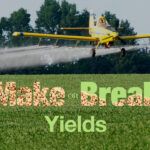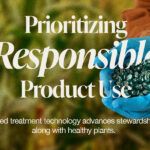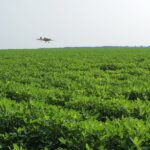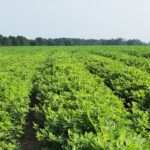Fungicide Timing Can Help Make or Break Yields
Timely fungicide applications deliver the greatest potential ROI by protecting corn and soybean crops when they’re most susceptible to disease and environmental stress.

We’ve all heard it before: Timing is everything, and it couldn’t be more true when considering when to make a fungicide application. Fluctuating weather conditions, commodity prices and disease severity complicate the timing decision, but now we know that timely applications of Syngenta plant-health fungicides are one of the best ways to consistently preserve yield potential under both disease conditions and environmental stressors like heat or drought. The steady increase in the number of corn and soybean growers that choose to apply a fungicide is evidence of the value fungicides deliver.
Prepare for Familiar Foes and Emerging Threats
Northern corn leaf blight, Southern rust, tar spot and gray leaf spot have earned their reputation as devastating corn diseases, and white mold, brown spot and frogeye leaf spot are known to decimate soybean fields.
These well-known threats pack a serious punch. Southern rust, a familiar foe to corn growers primarily in Southern states, can cause yield losses of up to 100 bu/A, according to the University of Florida IFAS. Meanwhile, researchers at South Dakota State University determined that white mold can cause soybean yield losses of over 40% depending on the infected growth stage. Corn growers also contend with emerging threats like tar spot, which has caused yield losses ranging from 20-80% since its discovery in the U.S. in 2015.
To better protect your fields from disease threats, timing is crucial when making your fungicide application to make sure you are getting the most value from your fungicides.
Spray When Disease Impacts Yields
Apply too early, and corn and soybeans are left vulnerable to late-season disease. Apply too late, and susceptible crops might not be able to recover from the onslaught of disease or environmental stress. Even worse, the wrong fungicide at the wrong time can negatively impact corn’s health, leaving it more susceptible to disease and providing little disease protection.
For both corn and soybeans, the optimal fungicide application window is centered around critical growth periods when disease has the greatest potential to impact yields.
Corn Application Timing
The largest yield reduction occurs at R1, when corn is fully tasseled, beginning to green silk and under stress. Foliar fungicides applied at tasseling or early silking (VT-R1) provide optimal disease control by preventing disease onset when corn is most susceptible to stress. VT-R1 applications deliver better overall disease control, stalk integrity and harvest efficiency. Applications at this crucial stage in development are most likely to see a yield response and provide significant value to your bottom line.

Soybean Application Timing
For most foliar soybean diseases, including frogeye leaf spot and brown spot, the ideal fungicide application window is at the R3 or “beginning pod” stage. The R3 growth stage occurs when the pod is 3/16” long at one of the four uppermost nodes of a main stem with a fully developed leaf. Foliar fungicides applied at this stage have the greatest impact on yield preservation because disease severity is beginning to rapidly increase and stress in the following R4-R6 stages can cause severe reductions in yield.
However, fields with a history of white mold might require an earlier application, especially if extended periods of cool weather are on the forecast. In this case, consider applying a fungicide at early bloom to late bloom. By the time you see widespread symptoms in the field, it will be too late to manage white mold effectively.
Choose the Right Fungicide
To help get the most out of your fungicide application, choose a product with a long-lasting residual to make sure your crops are protected between application and potential disease onset. Early applications of fungicides without a strong residual may only delay disease onset and ultimately still open the door for late-season losses.
That’s why we recommend Miravis® Neo corn and soybean fungicide and Trivapro® corn fungicide. Miravis Neo and Trivapro both provide long-lasting residual control as well as broad-spectrum preventive and curative disease control. The enhanced application flexibility and long-lasting residual help protect yield potential from application to harvest.
Reap the Rewards of Cleaner & Greener Fungicides
Both Miravis Neo and Trivapro fungicides do more than protect against disease. With the right application timing, they also provide plant health benefits to preserve yield potential, even in years with low disease pressure.
For corn and soybeans, these benefits include:
- Improved water conservation.
- Increased light absorption.
- Improved CO2 assimilation and nitrogen utilization.
- More efficient harvest.
These benefits translate to healthier, more productive crops by shifting energy away from fighting disease and environmental stress and toward growth and grain fill. Whether you are battling heavy disease pressure or drought conditions, these fungicides can provide consistent yield preservation.
Trial data shows that Miravis Neo and Trivapro fungicides delivered yield increases to corn and soybean fields over untreated in both the drought conditions of 2020 and the wet, tar-spot heavy conditions of 2021.
- The ideal fungicide application timing for both corn and soybeans is centered around critical growth periods when crops are most susceptible to disease.
- Knowledge of historical disease pressure can help growers fine-tune the ideal fungicide application windows for their fields.
- Miravis® Neo and Trivapro® fungicides provide additional plant-health benefits that benefit your bottom line across a wide range of weather conditions.






















